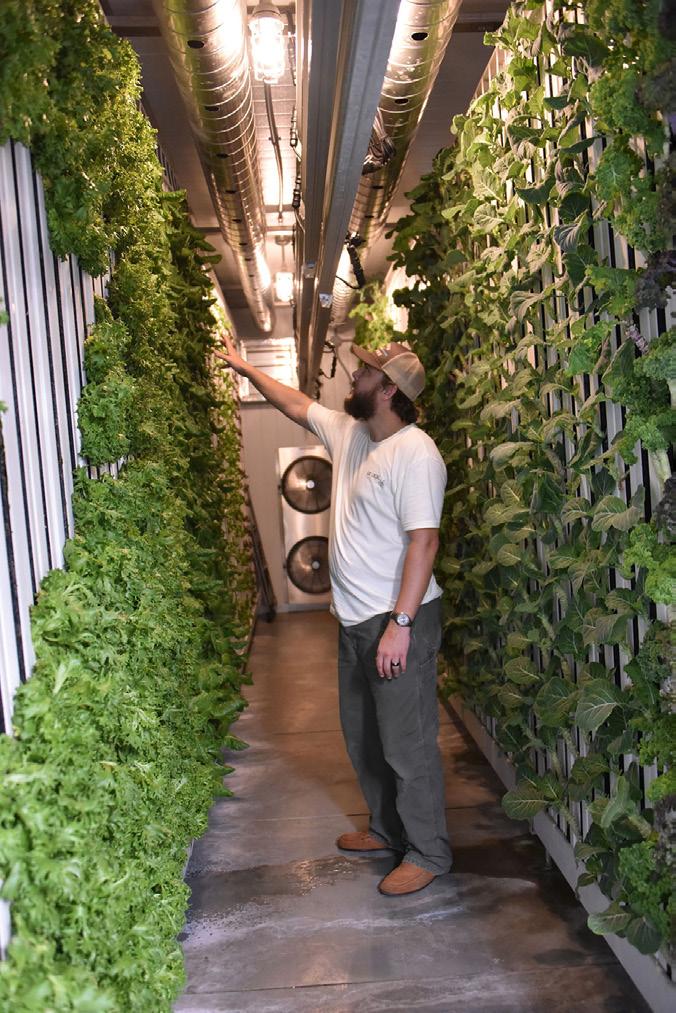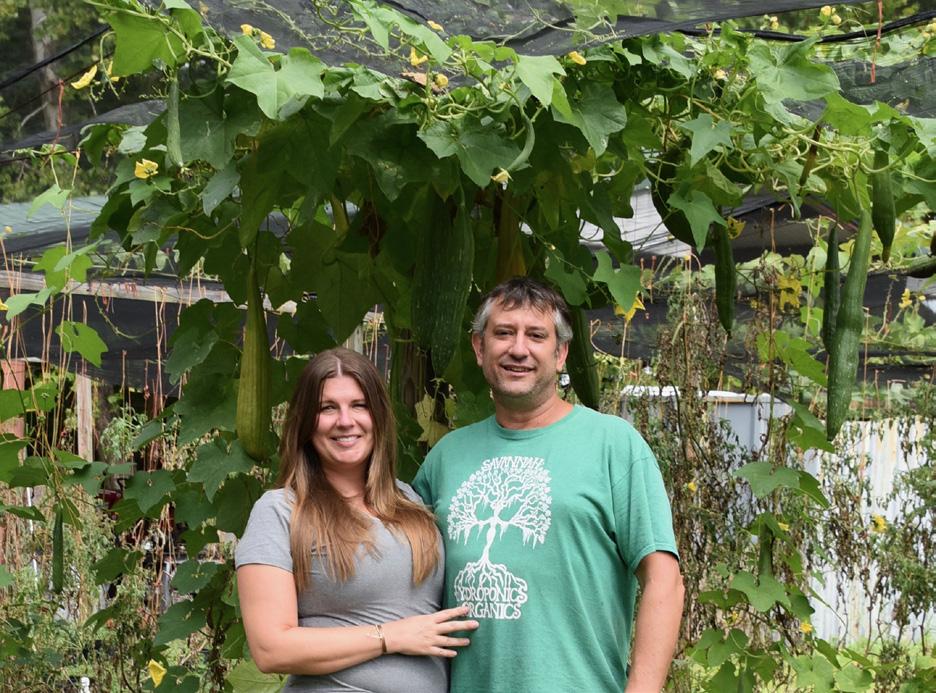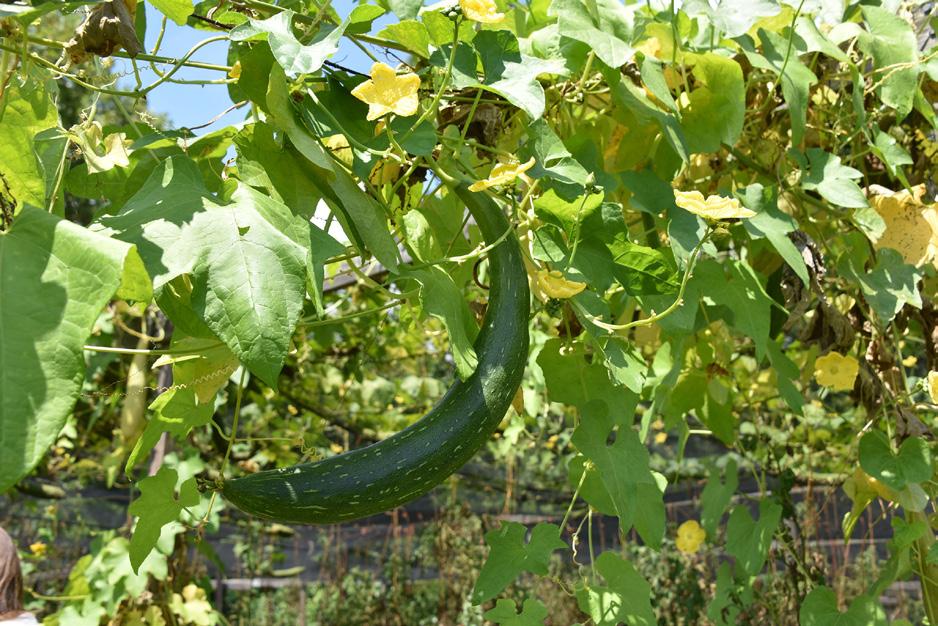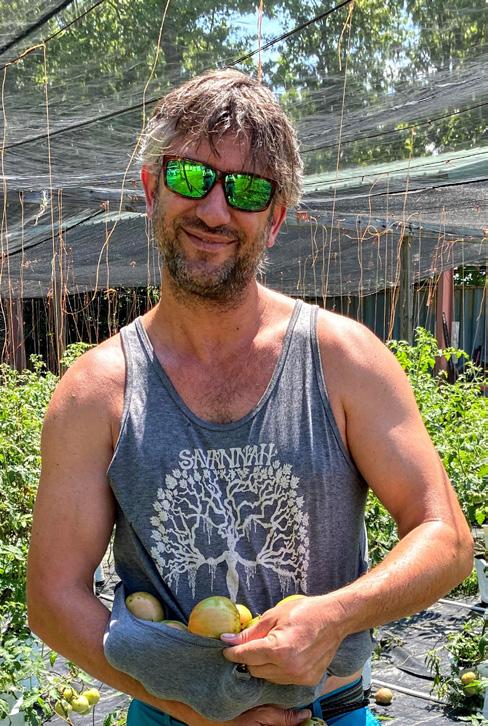
11 minute read
Hydroponics: Does it have a place in sustainable food systems?
by LeeAnna Tatum
In the world of agriculture, especially sustainable agriculture, hydroponics is a method that has received its share of skepticism and attention from detractors. As a soil-less means of growing plants, does hydroponics have a role in sustainable local food systems?
Advertisement
That is a question which I wanted answered for myself. In this article, I explore the reasons why two of our local producers choose to grow hydroponically and get some answers from one of Savannah’s leading experts on hydroponics.
Let’s cover some basics and deal with some of the main criticisms.
Hydroponics is a method of growing plants without soil. Fertilizers - nutrients in the form of their basic chemical components - are added to the water which serves as the conduit for carrying these nutrients into the plants via the roots.
Hydroponic systems are inherently not organic in the truest meaning of the term because the fertilizers consist of basic components, not the living matter from which those components are derived. In most countries around the world, food grown hydroponically cannot be labeled as organic for this reason.
In the United States, organic certification by the USDA of hydroponically grown foods is not prohibited. However, it does require that the growing process somehow incorporate living organisms that create a cycle of nutrients.
According to the USDA’s own report, “The USDA organic regulations do not currently prohibit hydroponic production. Certification to the USDA organic standards is currently allowed as long as the certifier can demonstrate it is certifying in a way that complies with the standard.”
Later in that same report, it defines hydroponics as “the growing of plants in mineral nutrient solutions with or without an inert growing media to provide mechanical support.” And the committee is in agreement that it should not be allowed to receive organic certification.
Confused yet? That’s fine. So are the experts.

So, what it basically comes down to is that hydroponically grown foods don’t have the “organic” label because the process is not part of a biological cycle of nutrients passing between living organisms such as what takes place within soil (where micro-organisms break down organic material into the nutrients that are then made available for the plants to utilize).
This is the case, because hydroponic systems supply plants directly with the specific nutrients they need already broken down to the point where the roots can take them up and use them.
Essentially, hydroponics allows plants to be grown in an environment that is completely self-contained and not a part of the broader ecology. For those who are “soil” purists, this represents a significant barrier to including hydroponics in a sustainable food system.
Keep in mind, however, that many hydroponic growers, including those discussed in this article, rely on the same fertilizers that have been approved for use by certified organic growers. And in most cases, are using far less of them (since the fertilizers go directly to the root system); and for indoor systems, they do not require the use of any pesticides or herbicides - including those that are approved for organic growers.
So, now that we’ve covered some of the things that hydroponics isn’t and why some in the sustainable food movement are somewhat resistant to this method of agriculture; let’s talk about the reasons I believe hydroponic farms are an important piece of a local sustainable food system.
(I emphasize “piece” because we should never become dependent on one form of agriculture. Period. And we must have farmers who are investing in our soils and local ecologies through sustainable, regenerative and holistic farm practices in order to have a truly sustainable system.)
Location, Location, Location!
When it comes to location, hydroponic farming is where it’s at. Small spaces, large spaces, indoor, outdoor, infertile land, asphalt, underground, rooftop - the locations are virtually limitless given the right system for the environment.

Grant Anderson of Better Fresh Farms, a container farm
In growing systems like those used by Better Fresh Farms in Metter, shipping containers are retrofitted to provide a fully controlled growing environment: temperature, lighting, water and fertilizer levels are all computer monitored and controlled.
These container farms have the potential to be ultra-local as they can be placed directly in urban centers - within a few short blocks of restaurants and retailers. They can also be used effectively in areas where harsh climates or otherwise poor growing conditions make traditional farming difficult or impractical.
Another means of making the farm more local to urban centers is the use of outdoor, above-ground systems like some of those on display at Tasty Farms in Savannah, the demonstration garden for Savannah Hydroponics and Organics. They are ideal for rooftops, patios or parking lots. These systems look very much like a traditional container garden, but use a non-soil alternative as a growing medium.

Kelly and Andrew, owners of Savannah Hydroponics and Organics. Pictured here at their test garden, Tasty Farms

Our advertisers make it possible to share the stories of our local food systems!
You can’t get much more local than growing food in your own home.
Hydroponics makes it possible to not only grow indoors, but to grow in a very small amount of space. “Whether someone has an apartment or a small house in a neighborhood, there’s things we can do to save square footage. Kitchen herb gardens are great … there are ways to maximize square footage,” Andrew Morris of Savannah Hydroponics and Organics explained.

But hydroponic farms are not restricted to urban use. The Hancock Farm located near Bartow makes use of a hydroponic system within a more traditional greenhouse environment in a rural setting.
Minimal Impact on the Environment
Because it is a growing method that is largely separated from the surrounding environment, hydroponics has minimal impact on the local ecology. Unlike large-scale conventional farming methods that are largely dependent on fossil fuels, hydroponics has the potential to leave a much smaller carbon footprint.
Ironically a system with “hydro” in its name, uses much less water than conventional growing methods where irrigation is required. Most hydroponic systems are designed with a closed loop that recycles the water.
“It uses less water because it recirculates,” Coy Hancock of The Hancock Farm explained, “and coming from Arizona, that’s a big deal to me. I mean … we use so much less water than we would use if we were growing outside.”
Grant Anderson of Better Fresh Farms also chose hydroponics from a standpoint of conserving resources.
“Beyond that,” Grant continued, “the ability to cut out chemicals that you would use to protect plants, keep pests off of them, deter deer … we don’t have to use any of that indoors in a controlled climate. The goal was to have a really sustainable conscientious farm that we could be proud of how we did it - that we did it, not only thoughtfully with the end product and end user in mind, but that it would be effective in the long run.”

Resiliency
Hydroponic systems provide a certain level of resiliency to the act of farming. With the exception of outdoor systems, most hydroponic farms are indoors and as such are protected from the effects of severe weather. Drought, hail, high winds, frost, flooding, freezing temperatures, heat waves - weather events that can devastate a traditional farm will have little to no effect whatsoever on a crop grown in a controlled environment.
That’s not to say that these farms are immune to disaster. Far more dependent on electricity and, in some cases internet connectivity, weather can certainly have an adverse effect. However, even if an entire crop is lost, the grower is only about 8 weeks away from being able to harvest an entirely new crop.
This kind of resiliency is especially important to local food systems as our climate is changing and storms are becoming stronger and more frequent, droughts more widespread and temperatures less predictable. As our climate changes in ways we may not have yet realized, it will be especially important to have growers who are using methods that are less vulnerable to the elements.
In its first few years of operation, The Hancock Farm was a traditional tilled organic farm, open to the elements, and was hit hard two years in a row with high winds which caused widespread damage. A big part of what motivated their transition to hydroponic greenhouses was the ability to mitigate the climate and unpredictable weather events.
Versatility
We’ve already covered all the ways that hydroponics make it possible to grow almost anywhere, but this type of farming also makes it possible to grow anytime!
Relearning to eat foods within their proper season is an important part of supporting a local food system. With a global food market, we’ve become accustomed to eating the fruits and vegetables that we want to eat at that moment, regardless of the season. And that makes it very difficult for local growers who simply cannot meet that demand.
As conscientious consumers, we should be aware of this fact. And there are many reasons why eating foods within their season is a good thing to do.
However, not all consumers are going to make their choices, either while shopping for groceries or while eating out, based on what is currently in season. (continued on page 34)
Consumers have come to expect and therefore demand things like: fresh strawberries in October, tomatoes in January and fresh greens in July.
If we don’t have local growers who can meet that demand, our local food systems lose out to the global marketplace. Hydroponic growers have the opportunity to fill that place within the local market.
And Dare We Say It - Convenience!
“Convenience” is a word that rarely finds its way into the sustainable food conversation - except when it is something to be disdained or an obstacle in the consumer’s mind that needs to be overcome. After all, the slow food movement is the very antithesis of fast-food and convenience foods.
But let’s not forget that convenience is not a bad thing per se … only when it comes at the expense of nutrition, the environment and our health. Convenience in and of itself is quite a nice thing.
Hydroponic systems make it possible to grow food without having to worry about weeds or insect pests; food can be grown right in one’s own home, even right in the kitchen; planting, transplanting and harvesting can all be done without stooping, bending, or kneeling. And food can be grown consistently from seed to harvest within a predictably reliable time frame.

In a perfect world perhaps hydroponic systems wouldn’t be needed. Where soils were fertile, climates perfect and tastes in tune with nature’s natural rhythms. But we don’t live in a perfect world.
We live in a world where some ground is so contaminated with pollutants it’s unsafe to grow food. We live in a world where our climate “norms” are changing rapidly. We live in a world where urban development makes land space limited right at the point where demand for food is highest. And we live in a world where the inhabitants like to eat tomatoes in January.
And in that world, hydroponic growers help keep our local food system just that little bit more secure, more diverse, and better equipped to meet local demand.

Our advertisers make it possible for us to share the stories of our local food systems!
Meet the Growers!

Grant Anderson of Better Fresh Farms
Grant started his farming career with hydroponics, wanting to grow a safer, healthier product for his family and his community without the use of pesticides and herbicides. BetterFresh Farms is currently housed in four retrofitted shipping containers that provide a fully controlled environment for growing.The farm primarily produces a wide variety of greens and radishes.
Grant’s method of farming is on the high-tech end of the spectrum. His system is controlled through an app where he can monitor and adjust everything from the temperature to the amount of fertilization and the level of the lighting. His newest edition also has a robotic element that automates the movement of the plants throughout their growing process - from seedling to harvest.

Coy Hancock of The Hancock Farm
Coy incorporated hydroponics on his farm about three years ago and hasn’t looked back. More of a traditional farm environment, his hydroponic system is located indoors with a cooling system that mitigates the heat, but does not provide full climate control. His greenhouses protect from insects and most weather conditions while still relying on natural sunlight.
Coy likes the convenience that the computer system provides in monitoring and controlling inputs, but does not use a smart device with his system. The farm currently has one fully operational hydroponic greenhouse used for growing greens. A second greenhouse is nearly complete which will be used to grow tomatoes and cucumbers and a third will be used for growing strawberries.

Andrew Morris of Tasty Farms
Growing plants has been the primary focus of Andrew’s personal and professional interests for more than a decade. He started Tasty Farms as a testing and demonstration garden for his small urban farm and retail garden supply store, Savannah Hydroponicsand Organics.
Closely resembling a traditional container garden, Tasty Farms utilizes a blend of organic, hydroponic, and aquaponic techniques to grow plants above the ground minimizing environmental impact and disease. Plants are never treated with harsh chemicals and are only sprayed with natural disease and pest controls.









